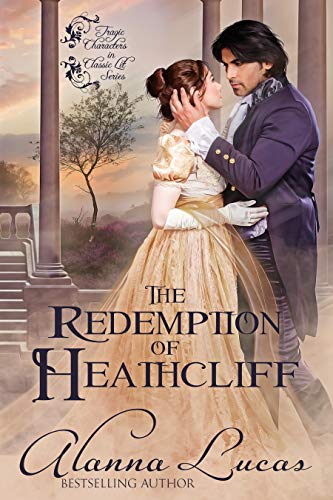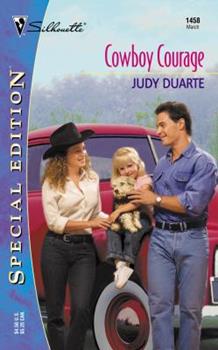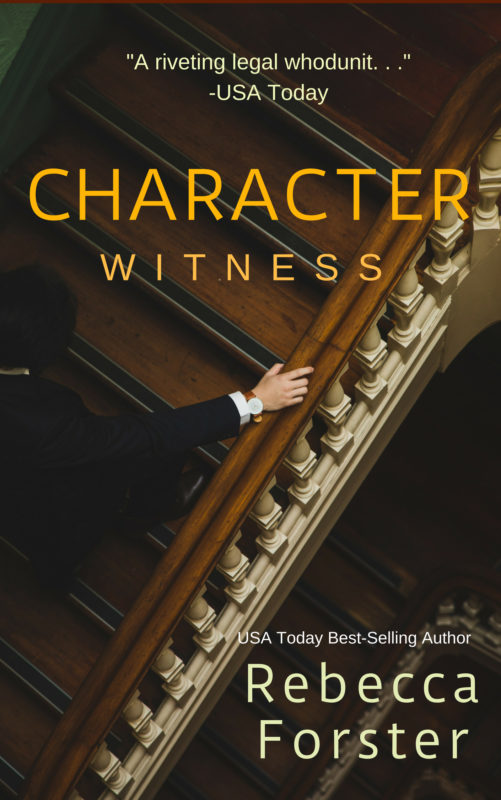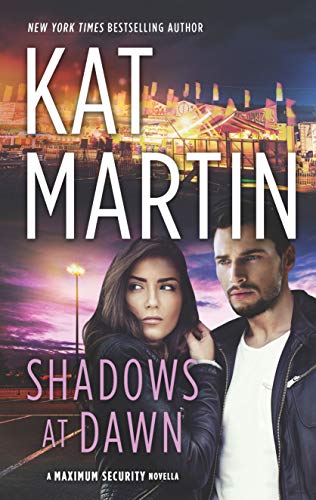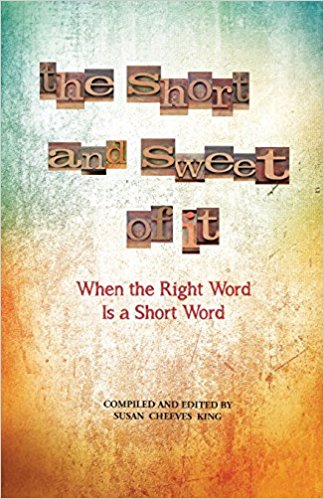PORTMANTEAUS by Jenny Jensen
March 24, 2018 by Jenny Jensen in category On writing . . . by Jenny Jensen tagged as creative writing, English, language, portmanteau
We’re so lucky. The English language is like play dough.
Oh yes, we have strict rules of grammar, tense, POV, all the way to the minutia of intransitive verbs. We can choose from a number of eminent grammar and style guides to ensure conformity. We have stalwart English teachers to drill those rules into our heads so that we are all on the same page. (And bless them all – there is nothing better than order over chaos). But despite those rules a writer has so much freedom to shape our mother tongue into forms wry, brittle, silly, heartbreaking, snarky or just plain mad.
I don’t have much command of any other language; a smatter of German, a soupçon of French, about a third cup of Latin and a healthy plateful of Spanish. But I do know that the rules of those languages are not as forgiving as English — not as much room to roam before you run afoul of the language police. English allows us to mangle all the rules of spelling, meaning, and sentence structure to reflect dialect, or character traits, add color, shift perceptions or mood and anyone with a good command of English can understand — and only pedants ever complain. Of course, you have to use the rules of punctuation. Gotta have those traffic signs.
Anthony Burgess used bits and pieces of Russian mixed with Shakespearian English and other tongues to give us Nadsat, the terrifyingly unique argot of his dark characters in A Clockwork Orange. The reader may have had to work at it a bit, but it was intelligible and colored the story with an unforgettable feel. Fantasy and Sci Fi from J.K. Rowling to Ursula K. Le Guin play with all sorts of mixed up language that become magical words and when you’re reading in those worlds you understand.
Dialect and special vocabulary enrich a tale on many levels and I’m in awe of those writers who do them well, but my favorite form of play dough English is the portmanteau. Anybody can create one of these inventive combinations, and everybody does — usually with something faintly deprecating or ironically funny in mind. And with just one word a portmanteau can ooze with meaning. Frenemy speaks volumes — we’ve all had one and it’s exhilarating to give ‘em a proper name. Craptacular very neatly wraps up the verdict on so much of our over-hyped media. And then there’s pompidity, my own invention from University days when I struggled to describe the quality of politicians.
All writers love words. Words are paint, chisel, fabric, and clay for our creativity. If you can’t find that one word that perfectly reflects your intent, try cobbling a new one together — no one will take points away. Blog is a portmanteau (web log) so if you’re lucky enough to have your portmanteau go viral, you might wind up in the OED.
Jenny
4 0 Read more
Openings by Jenny Jensen
February 19, 2018 by Jenny Jensen in category On writing . . . by Jenny Jensen tagged as editing, first lines, writing Mrs. Gabaldon’s bird feeder was ravaged again last night.
Mrs. Gabaldon’s bird feeder was ravaged again last night.
When you live in a rural area a neighbor’s angst can quickly be made your angst. This act of vandalism is the signal for me to bolt before everyone for a mile around is, once again, grilled for an alibi — it’s off to the library for me.
I wonder among the shelves, picking a book at random to see if it’s the one. We all have our ways of making that decision. I start with the title; it tells me something about the story and reflects on the author’s style and mindset. Of course I look at the cover, but that’s often more a statement from the publisher so I don’t give it too much weight (which is why I love Indie covers; those reflect the author). Quick read of the blurbs and then always, always, I read the opening. That seals the deal.
The brash hook is a raucous opener: She was ten years old, but knew enough to wipe clean the handle of the bloody kitchen knife. Whoa! I’m in, Annie Hauxwell! An opening like that is so bold, so intriguing I had to learn more, I had to know what happened. I completely enjoyed A Bitter Taste.
That’s one way to grab a reader but I love it when an opening sets the tone of the story and tells me something about the characters. My name is Salmon, like the fish; first name Susie. I was fourteen when I was murdered on December 6, 1973. I read that and love the autobiographical voice; it is filled with innocence and a gentle wisdom I know will tell me a tale of sorrow, and maybe redemption. Alice Sebold’s The Lovely Bones is unforgettable.
An opening can also bring the reader immediately into the genre and instantly set up expectations. It was a bright day in April and the clocks were striking thirteen. With just thirteen words (!) George Orwell has let me know that this is not the normal, comfortable world. There is something ominous about clocks plural, and of course clocks don’t strike thirteen —accept in the world of 1984. Who can pass on an opening like that?
Opening lines can make a book irresistible—after all, that’s what it’s about. There are no rules for openings except, of course, to make them well constructed sentences. Ask yourself what you want to reflect about the book and construct the opening around that. Make it a promise of the richness to come; make the reader unable to resist learning what happens.
BTW, as I turned onto my road, bulging book bag beside me, I could see the Cullison twins tidying up Mrs. Gabaldon’s bird feeder. They worked diligently under the watchful eyes of their mother and the stern direction of the lady herself. Phew, mystery solved, angst averted. I’m pretty sure I’ll get the details tonight and I’ll learn what happened.
Jenny
0 0 Read moreLife in Three Acts by Jenny Jensen
January 19, 2018 by Jenny Jensen in category On writing . . . by Jenny Jensen tagged as creating story, story creation, story telling, Three Act Structure
Life in Three Acts
Each of us who’ve studied our craft knows that cornerstone of writing wisdom: the Three Act Structure. Beginning, middle and end; introduce characters; present the problem; bring about the solution. All great stories from the Iliad to The Shining exhibit this tri-part structure. Clearly it’s a natural, almost organic, approach that speaks to our whole species. With every manuscript I edit I am mindful of the tri-part structure so why do I sometimes feel it’s a bit like paint by numbers? Does life work in three acts?
I’d just had one of those Slice of Life moments and started an email to share it with a friend. It was as I started to compose the narrative that those two questions came top of mind. I began at the beginning.
It all starts when my mouse crapped out just as I’m nearly finished with a manuscript due that day. I can deal with the little wheel freezing, but not with the loss of that critical left click. I rush to the nearest Staples. It’s still early and the parking lot is mostly empty. I have no idea what compelled me to pull nose to nose with the only other vehicle in front of the store, but that’s what I did.
I get out of my car and a sharp flash dazzles me. That’s weird. What in a deserted asphalt lot could sparkle like that? I pause to study the car I’d nosed up to. An old Toyota, faded and none too clean. Non-descript brown paint that hasn’t seen wax anytime this decade. Several dents and dings. The windows are dull with a layer of dust – all except the windshield. This is polished to a high shine. I peer closer. The frantic rush for a new mouse fades.
Every inch of the deep dash is covered in a mash up of paper; tax forms overlap insurance forms, spreadsheets fan out over hand written notes, an article torn from a magazine lays atop the Dear Sir of business correspondence, a shopping list peeks out from under the dog-eared sheets of some report. A fresh to-do list, in lurid purple ink, covers one arm of a carelessly discarded tiara, the rhinestones sparkling merrily in the morning sun. Propped at a furious angle on the slope of the steering wheel lay another tiara as though it had been tossed down on the papers in a fit pique. And there, on the passenger side, sat a third bejeweled diadem.
I step closer. I smile. Then I laugh. I’d parked nose to nose with The Very Busy Princess. Whose car is this? I want to shake hands with the woman (I know it’s a woman) who created this tableau with more narratives than GWTW. I want to say thanks. The day no longer feels so chaotic.
I am the only customer in Staples – she’s not here – and I have that deadline so clutching my new mouse I rush back to find my car alone in the parking lot. The story is over.
Is this a story in three acts? Subconsciously I’d veered that way and I could make a case that yes, there is a beginning a middle and an end. Introduce character: me – check. Present problem: where is reflection coming from – check. Bring about solution: the rhinestones – check. I’ve got three acts but it’s not very compelling. There isn’t a resolution – a payoff maybe, because the Busy Princess car made me happy. Then I realized that while the three Act Structure is essential to good story telling it isn’t a useful approach to creating a story.
Thinking about the incident led to creating scenarios around the car, the message, the artist. Any genre came to mind: Steam Punk, such travelling tableaux are the mark of an underground society and this artist is fleeing the robot guards of the Imperial League of Order. Fantasy: she is a fairy queen who has cast aside her crown and the red tape of court to pursue her hockey star lover – but will she accept immortality? Thriller: a young girl is kidnapped by a neurotic accountant and leaves his gifts to her in plain sight as a trail of crumbs for her rescuers.
Create any such story and then divide the action into as many parts as you need for a good arc and structure the narrative with a beginning a middle and an end and you’ve got a sound story. The three-act structure isn’t the driver for story creation – in fact it’s counterproductive – but it’s the ideal structure to hang that story on.
Jenny
0 0 Read more
The Write Spirit by Jenny Jensen
December 19, 2017 by Jenny Jensen in category On writing . . . by Jenny Jensen tagged as holidays, reading, reading about writing, writing We’re in the midst of the celebration season: Solstice, Hanukkah, Christmas, Cuanza, Wilkie Thumbnoggin. (Okay, that last one is just me but he’s a dear old friend and I only hear from him at this time of year; he leads such an interesting life. Can’t wait to hear what’s happened since that kerfuffle last year on the Isle of Jersey with the sea lions and Prince Charles.) It’s also the season of giving – or if giving isn’t practical, then sharing.
We’re in the midst of the celebration season: Solstice, Hanukkah, Christmas, Cuanza, Wilkie Thumbnoggin. (Okay, that last one is just me but he’s a dear old friend and I only hear from him at this time of year; he leads such an interesting life. Can’t wait to hear what’s happened since that kerfuffle last year on the Isle of Jersey with the sea lions and Prince Charles.) It’s also the season of giving – or if giving isn’t practical, then sharing.
I’d like to share with you some wonderful books – the fiction kind – about writing. We’re all readers and writers and we all read and write for different reasons. I read to learn something, to escape, to relax, to be entertained and, of course, to edit. But sometimes I read for therapy (as a 21st century American, I need a lot of therapy). My favorite therapy books are the fictional tales about writers. These stories deal so satisfyingly with the fears, annoyances and obstacles I run up against in my work in the same way you experience them in yours.
There’s nothing like a good writer examining the perils and pains of their craft through the lens of fiction. It’s not only enjoyable but also comforting to read an author’s take on the hazards we all face when we sit down to write. They address the dreaded writer’s block, the struggle for discipline, the angst of working with publishers and dealing with fans (think King’s Misery). The concept of a writer writing about writing is rich with a million possible premises because this business is – and always will be – about limitless possibilities.
[tweetshare tweet=”Editor Jenny Jensen’s Top Five Picks … On Writing” username=”A_SliceofOrange”]
Here are five of my picks. Some you may already have read but if not, I hope you’ll enjoy them.

Foul Matter, Martha Grimes (2004)
Ms. Grimes gives a grand romp through the egos, posturing and Machiavellian plotting of the industry of writing.

Blind Submission: A Novel, Debra Ginsberg (2006)
A wonderful indie look at delicate author sensibilities, the struggle for those next 1,000 words and the uses of an editor.

Piranha to Scurfy and Other Stories, Ruth Rendell (2001)
The title story offers the most satisfying rebuttal (or is it revenge?) to those obsessive readers who cannot let go of what they perceive to be a misplaced comma or an ‘incorrectly’ used word.

Plot It Yourself, Rex Stout (1959)
Every writer fears a charge of plagiarism. This tale is about a sort of reverse plagiarism and makes me ponder the infinite possibilities one can spin off an original premise.
Breakfast At Tiffany’s, Truman Capote (1958)
We never learn much about the narrator except that he’s a struggling writer. It’s through this writer’s eye that a rather tawdry story becomes magical. It’s the narrator’s portrayal of Holly Golightly, the way he invests her with an almost mystical quality that reaffirms for me the power of a writer’s vision.
If you can add to this list, I hope you will share. I’d love to read those tales about writing that have given you, if not therapy, at least a little wry solace. So happy reading and celebrate well this season!
Jenny
0 0 Read moreWriting The Dreaded Book Blurb by Jenny Jensen
November 19, 2017 by Jenny Jensen in category On writing . . . by Jenny Jensen tagged as Blrubs, clickbait, Marketing, writing
Cartoons by John Atkinson, www.wronghands1.com
Writing The Dreaded Book Blurb
Every author faces this last crucial challenge. You’ve already spent untold hours researching, writing and editing your book. Your title hits just the right poetic note. You’ve gone several tense rounds to find the perfect cover. All that remains is the book blurb, the opening salvo in the promotional war. This is the first (and sometimes only) chance to grab a reader and compel them to buy the book. And so, like click bait, you need to lure your reader with an honest but irresistible snap shot.
It’s an art, this writing of a synopsis that isn’t a synopsis, this sell copy that isn’t an ad. And for something that isn’t a science there are strict rules: you have to be honest – no misleading the reader. No spoilers or why bother to read it – which can be tough since the spoiler is often the most exciting part of the story. Keep it at 200 words or less and don’t make it one run-on paragraph. Use the proper keywords for your genre. Reveal something about the antagonist – readers like to know if they can root for the hero. This isn’t the place to relate the entire plot but you have to provide the zeitgeist, the feel of the tale. No easy task.
A lot of the writers I work with find this daunting and ask for help, which I am happy to provide. I think it’s difficult for the writer to step far enough away from their work to pick out the enticing, salient points and present them with the tension and intrigue that make for a successful blurb. To the author, all story points are important. I get that, but as an avid reader I know what works for me in a blurb. It’s not how much is said, but how compellingly it’s said.
I start with a deconstruction approach. It’s possible to distill any story down to bare bones. In his book Hit Lit – Cracking the Code of the Twentieth Century’s Biggest Bestsellers James W. Hall provided the most distilled example I’ve ever seen. This is a beloved tale that we all know intimately: “A young girl wakes in a surreal landscape and murders the first woman she sees. She teams with three strangers and does it again.” It’s short, accurate and intriguing but would it sell the book?
I wouldn’t distill it down that far but it makes a great beginning. What if we knew something about the young girl – an orphan, a princess, a refugee? And what about the surreal landscape – gaping desert, oozing swamp, forbidding mountains? Then the three strangers – female, male, older, menacing, kindly? Is all this murdering spurred by necessity, thrills, defense, the three strangers or is it unintended manslaughter? And finally, what is the young girl up to – revenge, enlightenment, finding a way out of the surreal landscape? Flesh out those points, add some genre keywords, reference any kudos and you could turn those original 24 spartan words into a 160 – 200 word blurb that would peak curiosity and entice the shopper to buy.
If you can step away from the totality of your story and deconstruct the plot to the primary elements, then present those elements in a provocative way you can create an effective selling tool with your book blurb. BTW, that book Hall described? The Wizard of Oz.
Jenny
2 0 Read more
Affiliate Links
A Slice of Orange is an affiliate with some of the booksellers listed on this website, including Barnes & Nobel, Books A Million, iBooks, Kobo, and Smashwords. This means A Slice of Orange may earn a small advertising fee from sales made through the links used on this website. There are reminders of these affiliate links on the pages for individual books.
Search A Slice of Orange
Find a Column
Archives
Featured Books
THE REDEMPTION OF HEATHCLIFF
✧༺♥༻∞Retelling of a classic with a Happily Ever After! ∞༺♥༻✧
More info →CHARACTER WITNESS
Kathleen Cotter, junior partner at a past-its-prime Beverly Hills law firm gets a doozy of a first case.
More info →SHADOWS AT DAWN
Jax and Mindy have to put aside their overwhelming attraction, but if they live through this, all bets are off…
More info →THE SHORT & SWEET OF IT: When the Right Word Is a Short Word
How do we say more with less? Can short, simple words make what we write so clear that the reader gets it? Or will it remind them of reading a child’s board book?
More info →Newsletter
Contributing Authors
Search A Slice of Orange
Find a Column
Archives
Authors in the Bookstore
- A. E. Decker
- A. J. Scudiere
- A.J. Sidransky
- Abby Collette
- Alanna Lucus
- Albert Marrin
- Alice Duncan
- Alina K. Field
- Alison Green Myers
- Andi Lawrencovna
- Andrew C Raiford
- Angela Pryce
- Aviva Vaughn
- Barbara Ankrum
- Bethlehem Writers Group, LLC
- Carol L. Wright
- Celeste Barclay
- Christina Alexandra
- Christopher D. Ochs
- Claire Davon
- Claire Naden
- Courtnee Turner Hoyle
- Courtney Annicchiarico
- D. Lieber
- Daniel V. Meier Jr.
- Debra Dixon
- Debra H. Goldstein
- Debra Holland
- Dee Ann Palmer
- Denise M. Colby
- Diane Benefiel
- Diane Sismour
- Dianna Sinovic
- DT Krippene
- E.B. Dawson
- Emilie Dallaire
- Emily Brightwell
- Emily PW Murphy
- Fae Rowen
- Faith L. Justice
- Frances Amati
- Geralyn Corcillo
- Glynnis Campbell
- Greg Jolley
- H. O. Charles
- Jaclyn Roché
- Jacqueline Diamond
- Janet Lynn and Will Zeilinger
- Jaya Mehta
- Jeannine Atkins
- Jeff Baird
- Jenna Barwin
- Jenne Kern
- Jennifer D. Bokal
- Jennifer Lyon
- Jerome W. McFadden
- Jill Piscitello
- Jina Bacarr
- Jo A. Hiestand
- Jodi Bogert
- Jolina Petersheim
- Jonathan Maberry
- Joy Allyson
- Judy Duarte
- Justin Murphy
- Justine Davis
- Kat Martin
- Kidd Wadsworth
- Kitty Bucholtz
- Kristy Tate
- Larry Deibert
- Larry Hamilton
- Laura Drake
- Laurie Stevens
- Leslie Knowles
- Li-Ying Lundquist
- Linda Carroll-Bradd
- Linda Lappin
- Linda McLaughlin
- Linda O. Johnston
- Lisa Preston
- Lolo Paige
- Loran Holt
- Lynette M. Burrows
- Lyssa Kay Adams
- Madeline Ash
- Margarita Engle
- Marguerite Quantaine
- Marianne H. Donley
- Mary Castillo
- Maureen Klovers
- Megan Haskell
- Melanie Waterbury
- Melisa Rivero
- Melissa Chambers
- Melodie Winawer
- Meriam Wilhelm
- Mikel J. Wilson
- Mindy Neff
- Monica McCabe
- Nancy Brashear
- Neetu Malik
- Nikki Prince
- Once Upon Anthologies
- Paula Gail Benson
- Penny Reid
- Peter J Barbour
- Priscilla Oliveras
- R. H. Kohno
- Rachel Hailey
- Ralph Hieb
- Ramcy Diek
- Ransom Stephens
- Rebecca Forster
- Renae Wrich
- Roxy Matthews
- Ryder Hunte Clancy
- Sally Paradysz
- Sheila Colón-Bagley
- Simone de Muñoz
- Sophie Barnes
- Susan Kaye Quinn
- Susan Lynn Meyer
- Susan Squires
- T. D. Fox
- Tara C. Allred
- Tara Lain
- Tari Lynn Jewett
- Terri Osburn
- Tracy Reed
- Vera Jane Cook
- Vicki Crum
- Writing Something Romantic
Affiliate Links
A Slice of Orange is an affiliate with some of the booksellers listed on this website, including Barnes & Nobel, Books A Million, iBooks, Kobo, and Smashwords. This means A Slice of Orange may earn a small advertising fee from sales made through the links used on this website. There are reminders of these affiliate links on the pages for individual books.


